PR Final Exam Review PDF

| Title | PR Final Exam Review |
|---|---|
| Course | Public Relations |
| Institution | Conestoga College |
| Pages | 9 |
| File Size | 139 KB |
| File Type | |
| Total Downloads | 28 |
| Total Views | 832 |
Summary
Intro and OverviewDefinition of PR: The strategic management of relationships between an organization and its diverse publics, through the use of communication to achieve mutual understanding, realize organizational goals and serve the public interestDifferences between PR and Advertising:PR: focuse...
Description
Intro and Overview Definition of PR: The strategic management of relationships between an organization and its diverse publics, through the use of communication to achieve mutual understanding, realize organizational goals and serve the public interest Differences between PR and Advertising: PR: - focuses on relationships - low cost/fee - high risk/ low control - more credible, trustworthy Advertising: - focuses on selling - paid/expensive - low risk/ full control - low credibility Many lenses: - Advertising - Marketing - Gov’t. relations - Investor relations 4 Models of PR: Press Agentry: - Predominant in the late 1800’s - Pure propaganda - One way communication, more hype than fact - Truth is not always a priority, company tries to distract from harmful info Public Information Model - Early 1900’s - Favours truthful disclosure of info to the media - Communicator acts as journalist - disseminating facts - One - way but truth and information are important
Two way - asymmetrical
-
Many corporations and businesses use this model Persuade public that your organization is right on an issue Manipulate public scientifically
Two way - symmetrical - Based on interactive feedback - Uses feedback to improve service
PR Framework - R.A.C.E Research + Analysis , Key Messages R - Research Step 1 - Define Issue or Opportunity “What is the organization trying to achieve?” Step 2 - How can we learn more about the problem? - Primary and secondary data - Primary - new data eg. research, surveys, focus groups - Secondary - existing data eg.competitor analysis, statistics canada, organizational documents Step 3 - Current vs. Desired State A - Analysis Step 1 - Develop PR objectives - SMART - Target specific area of improvement - Quantify or suggest indicator of progress - Specify who will do it - State which results can be achieved realistically - Specify when results will be achieved Step 2 - Stakeholder Analysis - Who are the key stakeholders? - What do they know? - What do we want them to know? Tactics: Traditional Media and News C - Communication - Tactics - Implementation plan Tactics - actions used to achieve PR goals
Media Relations campaign - News releases - Stories pitched to reporters/bloggers Social Media - YouTube videos - Encouraging website visits Partnerships - Partnering w/ other businesses to promote PR goals Definition of News - Is it new/timely? - Is it interesting? - Is there conflict? - Is it significant? (“So what?” test) Journalism vs PR Reporter: - Uncover the truth - Uphold the public’s right to know - Protect sources - Keep public officials honest PR Rep - Generate positive news coverage - Manage and protect organizations - Keep negative stories out of the news Inverted Pyramid Writing Crucial info at beginning - Lead - Who, what, where, when, why, how - Most important part of story - If you skip lead, still have basic facts Purpose of headlines - Motivate people to read the lead - Active language - Clever, sometimes play on words News Releases - Opportunity to tell and sell a story to reporters in their language - Goal is for reporter to be interested enough to follow up and write a story
-
Ideally a reporter follows up with request to interview
Tactics: Social Media Evolution of Traditional Media Relations: 1990s to 2005 + One-way communication - Media relations is cornerstone of communications - Reporters must go through media relations for access to info - Messages delivered through media reps trained to work w/ reporters Evolution of Social Media: 2005-Present - Social media becomes mainstream - Organizations realize power of speaking directly to key stakeholders - Citizen journalism takes root Media Relations Today: - Focuses on integrating and coordinating messages across multiple channels - Able to hyper-niche messages to specific audiences - Stakeholders expect engagement w/ organizations - Media no longer only ones to hold organizations to greater accountability
Opportunities and Challenges in the Digital Age Opportunities: - Reaching niche communities - Gaining global attention - Communicating directly w/ audiences - Gaining market intelligence Challenges: Losing control of the message Increasingly fragmented audiences Confronting issues and crises Having to be “on” 24/7 Ethical Behaviour - Applying ethical principles to the activities of business and to the relationships between businesses and various stakeholders
Examples of Unethical PR Astroturfing: Disguising a PR campaign to look like a community based grassroots movement Flogging: Establishing fake blogs
Pay for play: Paying bloggers for reviews Greenwashing: Deceiving people into thinking an organization is eco-friendly Tactics:Public Opinion and Persuasion Public Opinion - Prevailing opinion or popularly held belief - Can be challenging to change public opinion quickly but it does change over time - Varies by country and culture Factors Influencing Public Opinion Personal Opinions - Beliefs - Values - Knowledge Opinion Leaders - Celebrities - Politicians - Experts Mass Media - Print - Broadcast - Digital Influencing Public Opinion through PR Reason - Use facts - Logical argument Ethics - Gain audience trust - Appeal to notion of right and wrong
Emotion - Tell a compelling story - Paint a picture for the audience Emotion = strongest of 3 arguments
Tactics:Crisis Communications and Reputation Management Propaganda vs PR PR: -
Telling positive stories based on fact Used to educate, build awareness, persuade Involves relationship building and two-way dialogue
Propaganda: - Truth is exaggerated to the extent that it becomes a lie - Fake news - Often evokes patriotism - Usually associated w/ religion, war, politics Definition of a crisis - Unexpected event that affects a company’s profitability - Can hit any company at any time - Organizations must be prepared to manage a crisis Eg. natural disasters, employee injury/death, fraud, scandals, customer info leaks Steps to Prepare for a Crisis 1. -
Prevention Identify potential threats to organization Constantly scan for emerging issues Build important stakeholder relationships
2. -
Preparation Crisis communications plan Process for activating procedures Anticipate threats and develop key messages Media contact list
3. Response - How will you respond when something actually happens? - Follow CCO (Compassion, Conviction, Optimism) Impact of social media on a crisis - Info is often on social media before company is aware - Social media is active 24/7 - Communicators must respond much faster - Companies now expected to post updates on social media as well as traditional media - Can deliver messages directly to key stakeholders
Post Crisis Evaluation - How quickly did the team respond? - How could they respond faster? - How did the spokespeople do? - Were they able to deliver info w/ confidence? Tactics: Corporate Social Responsibility (CSR) CSR -
Voluntary activities undertaken by a company to operate in an economic, social, and environmentally sustainable manner Eg. charitable donations, diversity and inclusion, environmental sustainability
Ages and Stages of CSR - Age of greed - Age of philanthropy - Age of marketing - Age of management - Age of responsibility Cause Marketing - When companies partner with not-for-profit organizations for mutual benefit - Eg. CIBC Run for The Cure Role of PR within CSR - Promote internally and externally to build positive corporate reputation - Publish CSR annual reports - Develop frameworks for donation - Develop cause marketing partnerships When CSR backfires - A conflict of interest - A disconnect w company’s business interests - Greenwashing
Social Causes - Eg. Occupy Wall Street, March for our Lives Tactics:Event Planning and Evaluation Types of events organized by PR - Annual general meeting for stakeholders
-
Trade shows Recognition events News conferences
Pros and Cons of Events PROS - Attention grabbing - Generate media coverage CONS - Time consuming - Expensive Planning an event - components 1. 2. 3. 4. 5. 6. 7.
Target audiences Objectives Event outline Event logistics Budget Measurement Issues management
Event Outline - Documents look and feel of event - Take into account timing and budget - Describes venue, theme, decor etc. Media Advisory - Mix of news release and invitation - Usually brief, bulleted - Provides key info: date, time, location - Advises who will be available for interviews
Day of event - ensuring success - Arrive early - Be prepared for last minute changes - Be prepared for significant issues/crisis Metrics for event success - Attendance - Guest satisfaction surveys
-
Media coverage Fundraising amount raised Value in terms of advertising Full benefits of PR vs advertising costs impressions...
Similar Free PDFs

PR Final Exam Review
- 9 Pages

Chem Final Exam Review
- 12 Pages

Final Exam - Review notes
- 92 Pages

Bio Final Exam Review
- 2 Pages

Final EXAM Review booklet
- 5 Pages
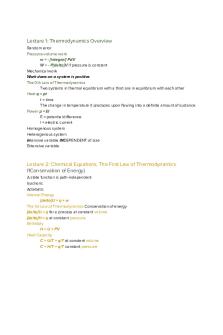
CHEM303 final exam review
- 4 Pages

Psychology Final Exam - Review
- 13 Pages
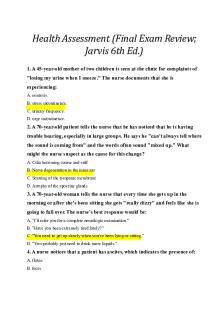
Jarvis Final Exam Review
- 12 Pages
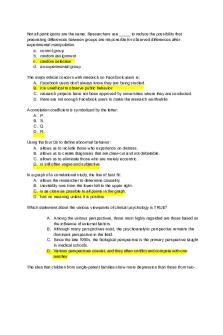
Final exam review
- 96 Pages
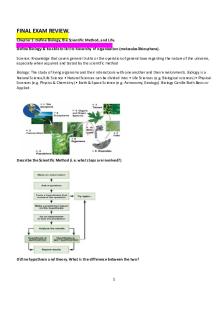
Final Exam Review
- 48 Pages
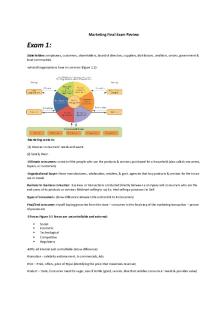
Marketing Final Exam Review
- 15 Pages
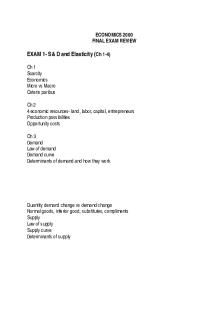
Final exam review
- 8 Pages
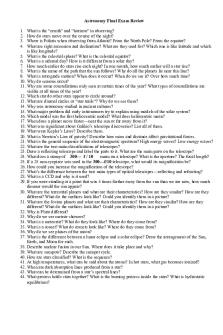
Astronomy Final Exam Review
- 2 Pages
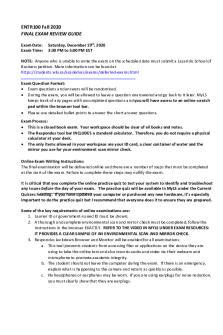
Final Exam Review Guide
- 4 Pages

Final exam review flsp4420
- 5 Pages

Theo Final Exam Review
- 16 Pages
Popular Institutions
- Tinajero National High School - Annex
- Politeknik Caltex Riau
- Yokohama City University
- SGT University
- University of Al-Qadisiyah
- Divine Word College of Vigan
- Techniek College Rotterdam
- Universidade de Santiago
- Universiti Teknologi MARA Cawangan Johor Kampus Pasir Gudang
- Poltekkes Kemenkes Yogyakarta
- Baguio City National High School
- Colegio san marcos
- preparatoria uno
- Centro de Bachillerato Tecnológico Industrial y de Servicios No. 107
- Dalian Maritime University
- Quang Trung Secondary School
- Colegio Tecnológico en Informática
- Corporación Regional de Educación Superior
- Grupo CEDVA
- Dar Al Uloom University
- Centro de Estudios Preuniversitarios de la Universidad Nacional de Ingeniería
- 上智大学
- Aakash International School, Nuna Majara
- San Felipe Neri Catholic School
- Kang Chiao International School - New Taipei City
- Misamis Occidental National High School
- Institución Educativa Escuela Normal Juan Ladrilleros
- Kolehiyo ng Pantukan
- Batanes State College
- Instituto Continental
- Sekolah Menengah Kejuruan Kesehatan Kaltara (Tarakan)
- Colegio de La Inmaculada Concepcion - Cebu